SUNDANCE FILM FESTIVAL 2012 – The Best of Festival and Wrap
Written by: FFT Webmaster | February 5th, 2012
 PARK CITY, Utah—- In its third year under the leadership of John Cooper as
PARK CITY, Utah—- In its third year under the leadership of John Cooper as
Director, and Trevor Groth as Director of Programming, Sundance 2012 kept its mission
of championing new American independent cinema while exploring world cinema and
opening up opportunities for experimentalists to display their works in New Frontier. It was
a year that was about average in quality. The list below points-out ten of the exceptional
films from the 117 selected feature-length films, representing 30 countries by 45 first-
time filmmakers, including 24 in competition. This year there were 4,042 feature-length
submissions of which 2,059 came from the USA and 1,983 were international feature
length films. Ninety-one films at the festival were world premieres.
As we have for the past 10 years our coverage touches on films from every major
category.
THE FILM FESTIVAL TODAY TOP 10 OF SUNDANCE 12
- Beasts of the Southern Wild(Zeitlin)
- Sleepwalk with Me (Birbiglia)
- The Surrogate (Lewin)
- Safety Not Guaranteed (Trevorrow)
- Al Weiwei: Never Sorry(Klayman)
- The House I Live In (E. Jarecki)
- The Queen of Versailles(Greenfield)
- Wrong(Dupieux)
- The Ambassador(Brugger)
- Searching for Sugar Man(Bendjelloul)
U.S. DOCUMENTARY COMPETITION
The House I Live In
****out of 4
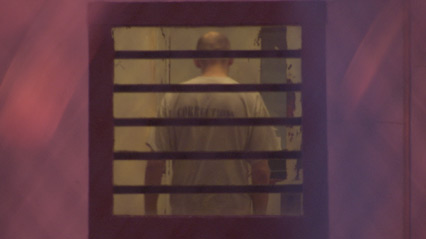
Director Eugene Jarecki has crafted a most disturbing and troubling examination of the
drug problem in the United States. For over 40 years the “War on Drugs” has made over
45 million arrests and turned the United States into the most aggressive jailer in the world.
"The House I Live In" provides a clear perspective of the War on Drugs from the director,
who ably provided us with a lucid view of how we got into the Iraq War in "Why We
Fight." The film utilizes a wide range of illuminating talking heads, from Oklahoma prison
guards and Reagan-era appointees to street dealers, junkies and Jarecki’s own nanny, who
lost her son to drugs and now regrets working for her white employers at the cost of her own family. “The House I Live In” was awarded The Grand Jury Prize at Sundance12
and will air this year on HBO.
AI Weiwei: Never Sorry
****out of 4

Directed by Alison Klayman, Ai Weiwei: Never Sorry is an intimate documentary
about Chinese contemporary artist Ai Weiwei. Klayman, a graduate of Brown
University, hits a home run her first time at bat as a filmmaker as she follows
the controversial artist over a 3 year period as he prepares for exhibits in London
and Munich. His political encounters with the Chinese government provide
the tension that makes viewing this film so provocative. Klayman creates a
comprehensive picture of why his artistry is so unique and why it’s inextricably
intertwined with his personality. At Sundance12, the inspiring and absorbing
film was awarded a Special Jury Prize for Spirit of Defiance in Documentary
Filmmaking.
How To Survive a Plague
***1/2out of 4

Director David France’s insightful documentary is an accomplished piece of filmmaking
replete with fascinating interviews and an emotionally poignant story arc. It traces the
path from the early days when AIDS was certain to end in death and through the protease
inhibitor revolution of the mid-‘90s. That breakthrough shift from single therapy to
combination therapy changed the paradigm and a decline in AIDS-related deaths in
the U.S. caused a diagnosis of HIV to be seen as a chronic illness. But it was the shift
away from rage toward science that ultimately broke the gridlock on AIDS treatment.
This entailed a divisive split from the activism-oriented ACT UP core. Staley founded
breakaway unit TAG (Treatment Action Group) in 1992, eventually getting them a
seat at the research table where they could make sure mistakes with early drugs like the
prohibitively expensive and minimally effective AZT were not repeated. This is a labor of
love and even 3D animation is employed to explain the complex biochemistry employed to
manage this most insidious viral menace.
The Queen of Versailles
***out of 4

Directed by Lauren Greenfield, The Queen of Versailles began life as a portrait of one of
America’s richest families, 74 year old Florida billionaire David Siegel, his (third) trophy
wife Jackie (43) and their eight children, who live in a giant mansion, strewn with toys,
animals and bad taste furniture while waiting to move into their dream home, a $100
million, 90,000 square foot model of the Palace of Versailles, which David is building as
a result of his lucrative time-share-based empire, Westgate Resorts. However, when the
2008 financial crisis kicks in, David’s subprime mortgage dependent business is suddenly
in deep trouble and he’s forced to lay off thousands of employees as the banks circle both
the dream home and the jewel in the Westgate Resorts’ crown, a giant tower of luxury flats
in Las Vegas. This is an impressive work which shows the manipulative nature of money
in human interactions. This film is a must see for anyone who thinks that money can buy
happiness.
Detropia
***out of 4
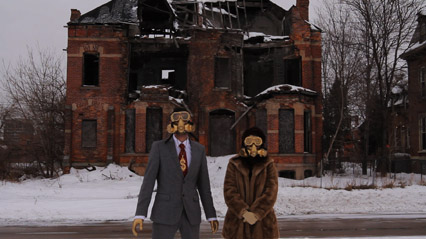
Creating a documentary with location as your lead character is no easy task. Choosing
Detroit seems like a subject that would be riddled with clichés about the failure of the
American dream. Detropia could have easily been an incoherent mess of interviews with
unemployed autoworkers and cutaways to the often-photographed crumbling buildings of
inner city Detroit. Luckily, directors Ewing and Grady have created something that moves
beyond the stereotypical. While the cinematography is first- rate, the story is an insightful
look at what capitalism does to the weak. Through a series of interviews with many
members of Detroit’s community (not just the unemployed auto-workers) and shocking
statistics about job loss and population decline in what was once America’s fastest growing
city, Grady and Ewing not only reveal how Detroit has struggled, but why, and what has
been attempted to do to slow their decline. Detropia also explores the unexpected effects
that come from living in a city where property value has plummeted. Although Michigan
has lost 50 percent of its manufacturing jobs, there are nearly 100,000 abandoned homes
and only 800,000 living in the city, downtown Detroit has actually seen a 59 percent
increase of young people moving in, many of them interested in creating art. Overall,
Detropia encapsulates what it means to be a major city attempting to stay relevant in a
post-industrial world. The film was awarded The U.S. Documentary Editing Award at
Sundance 2012.
Chasing Ice
***out of 4
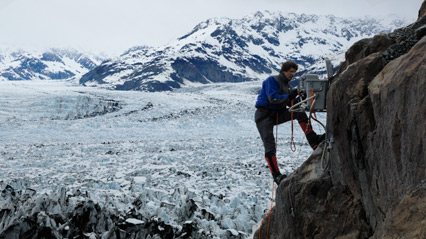
Chasing Ice is a documentary focusing on the Extreme Ice Survey (EIS), a project that
captures time-lapse footage from certain glaciers, which periodically documents their
physical state. The film follows renowned photographer and EIS founder James Bolag
on his mission on to show how climate change is affecting glaciers in the Northern
Hemisphere, in parts such as Alaska, Greenland and Iceland.
The film itself started as two different projects until the director Jeff Orlowski decided to
combine the two during his time as the EIS videographer. The documentary charts the life
of the project, from creating the necessary equipment to continuously photograph glaciers
for several months to Balog putting himself at physical risk. Balog and the team raise a bar
in terms of lack of self preservation, such as abseiling down ice overhangs, but the results
that the project have captured are staggering and need to be seen to be believed. The film
won the Excellence in Cinematography Award for Documentary at Sundance 2012.
U.S. DRAMATIC COMPETITION
Beasts of the Southern Wild
**** out of 4
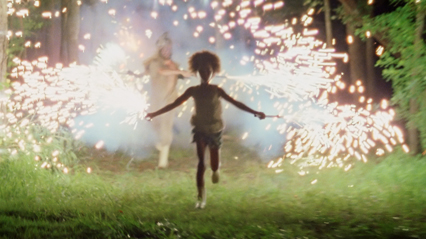
First-time director Benh Zeitlin depends on his location and the spirit of a six year-old
black girl named Hushpuppy (first-timer, Quvenzhane Wallis) as the essential characters
to carry the most stunning and amazing micro-budget independent feature film of 2012
thus far. The magical location is a tiny corner of Louisiana known affectionately as “The
Bathtub”, a marshy swampland settled by indigents whose ancestors were Cajuns. Because
the “Bathtub” is way below sea-level and beyond the safety net of the supposed levee
system it could be swept away by a hurricane with the rain-making potential of a “Katrina”.
Hushpuppy with uncanny wisdom beyond her half-dozen years declares: “Any day now the
fabric of the universe is coming unraveled”.
The story is derived from a stage play by co-screenwriter Lucy Alibar titled “Juicy
and Delicious” but the exquisite imagery is the mise en scene of DP Ben Richardson
whose work in Super 16mm is extraordinary as is the precise editing of Crockett Doob
and Alfonso Goncalves. With its voiceover setting the philosophical tone one is reminded
of early Terrence Malick crossed with Mark Twain. The mythical beasts of the title are
an extinct breed of wild cattle known as “aurochs” that thunder through the land with a
power and grace that garners awe. Hushpuppy’s father is named Wink (another first-time
actor, Dwight Henry) who is portrayed as a delirious, violent and unpredictably emotional
man who showers paternal affection on the little girl. The film won the Grand Jury
Prize for Dramatic Competition at Sundance 2012 and Ben Richardson won the Best
Cinematography in a Dramatic Film as well.
Safety Not Guaranteed
***1/2out of 4

Directed by Colin Trevorrow (making his feature debut) and written by Derek
Connolly, Safety Not Guaranteed stars Aubrey Plaza as Darius, am irreverent
magazine intern who quickly joins forces with a cocky journalist named Jeff (New
Girl’s Jake Johnson) and another intern (Karan Soni as Arnau), when Jeff suggests
they track down and interview a man who’s placed a classified ad looking for a
companion for time travel.
Driving to Ocean View, Washington, they soon discover that the man in question is
scruffy supermarket employee Kenneth (Mark Duplass) but as Darius begins to train
as his partner under the pretext of answering his ad, she starts to wonder whether he’s
delusional or whether he’s actually onto something.
Hugely enjoyable and consistently laugh-out-loud funny, Safety Not Guaranteed is
pretty much the perfect Sundance movie, thanks to an intelligent, witty script, assured
direction and terrific performances from its superb cast. Highly recommended.
Smashed
*** out of 4
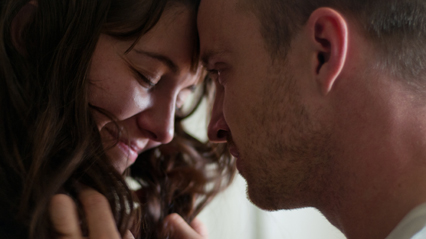
Director and Columbia University MFA graduate James Ponsoldt has crafted a
compelling second feature with this, his second Sundance film with “Smashed”. Mary
Elizabeth Winstead (Scott Pilgrim, The Thing) plays Kate, an alcoholic who quickly
realizes, after dry heaving in front of her kindergarteners and waking up one morning
with a bunch of homeless people under a bridge, that she has a serious problem. Facing a
drunken husband (Breaking Bad’s Aaron Paul), a distant mother and the embarrassment of
her situation, Kate attempts a twelve-step program in AA. Instead of putting the emphasis
on the craze of drunken behavior, Smashed focuses on the uphill battle of recovery—a
bumpy road with engaging revelations. A stronger film than Ponsoldt’s “Off the Black”,
this one was awarded a U.S. Dramatic Special Jury Prize for Excellence in Independent
Film Producing at Sundance 2012.
The Surrogate
***1/2out of 4

The Surrogate is a film about a disabled man who wishes to lose his virginity. Directed by Ben Lewin, the story was adapted from an article by Mark O’Brien about his struggles and triumphs as a man with an “Iron Lung” and his wish to have sex for the first time. We meet his professional sex surrogate Cheryl (a wonderful, Helen Hunt) and their journey to ultimately achieving his lifelong wish. An outstanding performance from John Hawkes as Mark O’Brien. pulls the audience into to this film on an empathy level. The complexities of love as it affects the disabled man are what draws us into the story and his interaction with the priest Father Brendan (a humanistic William H. Macy). The film was noted for winning an Audience Award for Drama at Sundance 2012.
Simon Killer
***out of 4

Director Antonio Campos (“Afterschool”) follows up his auspicious debut with
a much more improvised production which has mood to burn. It presents a
fascinating visual strategy, and subtle performances (particularly by the two leads,
who all but disappear into the scenery, so natural and unaffected is their work). As
a formalist exercise, it is utterly absorbing. Narratively, I’m not so sure but .the
ending reveals that Simon is capable of something equally inexplicable and evil,
beneath a veneer of banality and fecklessness. Campos is a director to watch!
WORLD CINEMA DOCUMENTARY COMPETITION
The Ambassador
***1/2out of 4
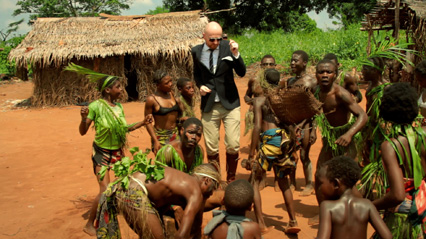
Directed by and starring Mads Brügger, The Ambassador chronicles the events of Mr.
Brügger as he attempts to reveal the political corruption that exists in one of the most
dangerous places on earth, the Central African Republic In the film, Mads purchases a
Liberian ambassadorship for 150,000 pounds and then turns his penthouse hotel, located in
the capital Bangui, into his political headquarters. Once firmly inside the country, Mads
starts to make connections with influential officials and people, building his cover story
which involves building a match factory to help the economy of the state. At the same
time, he clearly lays out his “actual” goal which involves a diamond deal that would allow
him to leave the state with a bunch of diamonds, something that is highly illegal.
The persona Mads has built for the film is quite comical, and much like Sacha Baron
Cohen in Borat, he is fully engulfed by it. His character is slightly racist, especially
towards Asians, but also very charismatic and naive, using it all to his advantage at every
possible moment so that he may fulfill his secret agenda of exposing the corrupt individuals
he is dealing with, all of whom are trying to take advantage of him. Tack on a wardrobe
reminiscent of something Teddy Roosevelt would wear while hunting and you’ve got a
ridiculous looking picture that people end up embracing.
Searching for Sugar Man
****out of 4

Directed by Swedish filmmaker Malik Bendjelloul, the film first introduces us to Cape
Town record shop owner and music fan Stephen Segerman, who explains that he was
nicknamed “Sugar Man” because of his obsession with early 1970s American singer-
songwriter Rodriguez. When Segerman meets similarly obsessed music journalist Craig
Bartholomew-Strydom, the two pair up and decide to try and find out what happened to
Rodriguez, despite prevailing and conflicting rumors of his death (one such rumor has him
committing suicide on stage).
Incredibly, the pair discover Rodriguez living in a run-down Detroit neighborhood, having
raised a family, making a living through construction work (one of many parallels with the
equally brilliant Anvil: The Story of Anvil). The film then takes a further turn as Rodriguez
discovers the extent of his cult following in South Africa, where he had been an important
voice amongst anti-Apartheid whites, and is persuaded to embark on a series of comeback
concerts
What makes the film so poignant is that, like “Anvil”, it taps into powerful musical myths,
such as the idea that an artist could have huge success in one country (Japan, South Africa)
without even being aware of it, or that after years of obscurity, they could finally achieve
the recognition they deserve. To that end, the film presents Rodriguez as an astonishing
musical find (it’s likely most viewers won’t have heard of him), up there with the likes of
Bob Dylan and Nick Drake. His lyrics and musical style closely resemble Dylan’s, but
there’s an authentic voice and style that is uniquely Rodriguez. This film was cited as an
Audience Award Winner for World Cinema Documentary at Sundance 2012.
WORLD CINEMA DRAMATIC COMPETITION
Violetta Went to Heaven
***out of 4

A woman of passion with her ego on her sleeve, Violeta Parra was a revered
folk songstress of Chile who gave a voice to the populace. This film gives
much to contemplate, not only about film craft, but the traits of charismatic and
transformative figures. A beautifully conceived character study, Violeta’s story is
told without cliché through the use of artfully edited flashbacks.
I knew little about the life of Violeta Parra before the screening of Violeta Went to
Heaven (retitled Violeta) at Sundance, but this portrait of Violeta not only tells the
story of her activism in pre-1960 Chile, but is also filled with her musical work,
intriguing life details, memories, loves and hopes. However, it would be a huge
disservice to refer to Violeta Went to Heaven as simply a biopic. The term "biopic"
evokes images of linear story lines and superficial performances as actors move
quickly between life events to tell an often glamorized life story. To put this
statement in perspective, in contrast Violeta Went to Heaven makes The Iron
Lady, a biopic in every sense of the word, look like commercialized pulp with its
stylized cinematography, and melodramatic underscore, and in comparison with
the performance of Francisca Gavilan as Violeta Parra, Meryl Streep’s portrayal
of Margaret Thatcher is a caricature. Rather, Violeta Went to Heaven gives us
a deeper, multi-faceted portrayal of a woman who was at once creatively gifted,
ideologically committed and deeply conflicted, while putting her in settings that
realistically evoke the gritty circumstances and cultural influences that shaped her
life. This submission won the World Cinema Grand Jury Prize for Dramatic Film at Sundance 12
Valley of Saints
****out of 4

On Dal Lake, located in the conflict-torn Kashmir region bordering India and
Pakistan, life revolves around the water, and even flourishes, in the hand-to-
mouth world of its inhabitants…yet Gulzar is leaving for a better life. Poor and
enterprising, Gulzar lives with his uncle while working as a tourist boatman on
the lake, saving his meager earnings against the day when he and his best friend
can escape. Now the day has finally arrived, Gulzar meets his friend to depart for
their journey, but a five-day military curfew temporarily detains them. Gulzar
must continue working so as not to deplete his travel funds, and he is hired by
Asifa, a young environmental scientist, to take her out on the lake to gather water
samples. Through Asifa, Gulzar sees the inviting world beyond Dal Lake, while
their growing relationship creates a rift with his best friend. The chaste attraction
between Gulzar and Asifa briefly obscures her mission to assess the environmental
impact of people on the lake’s ecosystem. However, Gulzar’s dawning realization
of Asifa’s agenda and its implications for the Dal Lake inhabitants soon awakens a
dilemma within, and he ultimately must decide between his dream of leaving and
his beloved lake.
Despite its serious thematic undertones, Valley of Saints is a charmer. Replete with
the humorous quirks of ordinary people, the film gives us a sympathetic “every man” in Gulzar. His universal desire for a better life is differentiated only by his
unique economic, cultural and political circumstances.
Although the film has a
clear environmental message, the filmmakers understand an activist agenda that
takes precedence over dramatic story and character development becomes preachy,
doing more harm than good by dooming it to like-minded audiences. Valley of
Saints, however, is first and foremost a beguiling personal drama with broader
appeal, told with poignancy and humor. Gulzar is endeared to us as he overhears
village matriarchs discuss his poor prospects as a suitor or as he attempts to cross
the socioeconomic chasm between him and Asifa. These characters are insightfully
humanized in their nuanced portrayals, and the cinematography captures these small
moments along with the lush beauty of the Kashmir region. As a result, we are
drawn into a compelling, uncontrived story in which the environmental and political
issues appear incidental, yet no less crucial. This submission won the World Cinema Audience Award for Dramatic Film at Sundance 12
Wrong
****out of 4
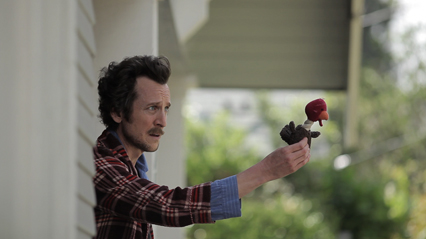
Director/writer Quentin Dupieux makes another fascinating and quirky feature
with “Wrong”– a follow-up to his first film “Rubber” The story tells of Dolph Springer
(Jack Plotnick)who has lost his dog, and that’s just the tip of the iceberg where the
strangeness in his life is concerned: His alarm goes off at 7:60, and it rains inside his office
– though that’s a whole other story, as is the weird thing his gardener Victor (Eric Judor)
needs to show him. At least there is some word on his dog – according to an intermediary,
the mysterious Master Chang (William Fichtner) would like to speak with him about it.
It’s a weird world that Dolph lives in, but what sets Dupieux’s strange world apart from
those of other quirk-pushers is how delightfully the oddities reinforce each other, with
none of them seeming like a thing that would keep something akin to regular life from
functioning. Everything seems a bit out of date and off-center, and the overall effect is to
have the audience feel a bit off-center themselves, but not overwhelmed.
But then, are all our lives are like Dolph’s when you get down to it? The world is
confusing, authority figures are arbitrary, and nothing works quite the way you would
expect. Take away something that is reassuring and dependable, and it gets that much more
strange. Or maybe the existing strangeness is just thrown into much sharper relief. Either
way, this feeling that the world, even if it is navigable, doesn’t quite make sense makes
Wrong a movie that is completely accessible in the broad strokes but not obvious about it;
the details are constantly surprising. At FFT, we thought “Wrong” among the best films at
Sundance 12.
Arbitrage
***1/2out of 4
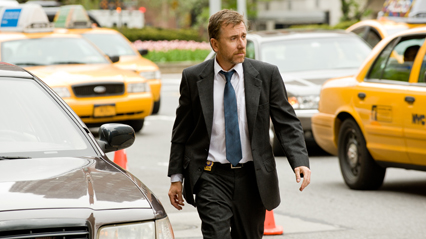
As written and directed by Nicholas Jarecki, brother of documentarians Andrew
("Capturing the Friedman’s") and Eugene ("Why We Fight") and a documentary
filmmaker in his own right ("The Outsider"), "Arbitrage" isn’t a finger-wagging
tale of financial fraud along the lines of last year’s "Margin Call" so much as a
sturdy drama – to call it a thriller would suggest something a bit more propulsive – in which Miller(a wonderful Richard Gere) attempts to keep up appearances in
the twilight of his life. Jarecki plays off our natural sympathies well; we know that
Miller is a fraud like so many real-life white-collar criminals, we know that Det.
Bryer (Tim Roth) is well-justified in wanting to nab him, and yet our ingrained
instincts lean towards wanting the story’s silver-haired anti-hero to actually get
away with it scot-free (a feat that too many real-life white-collar criminals seem to
pull off for themselves like Michael Milken..
Red Hook Summer
**1/2 out of 4

Veteran auteur and director Spike Lee returns to his roots some 26 years after “She’s Gotta
Have It” with the story of a young man from Atlanta (Jules Brown), a young would-be
filmmaker nicknamed "Flik" His mother sends him to spend the summer in Red Hook,
Brooklyn, with her estranged father, a Baptist preacher named Enoch (Clarke Peters).
Flik and his grandfather are immediately at odds; the older man expects him to work at
the church and attend services every Sunday, and Flik is just not into it and it becomes a
battle of wills. Enoch’s earnestness only drives Flik further into indifference. “Red Hook
Summer”, made with Lee’s money and students from his NYU classes, is engaging and
while not his strongest film has an honesty about it that makes it worth your while.
Robot and Frank
*** out of 4
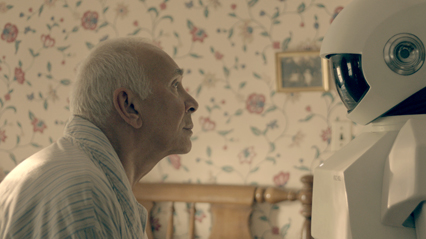
The first feature film for both director Jack Schreier and screenwriter Christopher D. Ford
(“Atom TV”) is heart affecting little tale which is both amusing and engaging.
The story is about Frank (Langella) a retired jewel thief and safecracker who, long after
serving time in jail, is spending his not-so-golden final years living alone in a rambling
house in a small town in the northeast. He passes his days chatting up the local librarian
(Susan Sarandon) and covertly pocketing cheap trinkets, mostly just to see if he still has
the touch, at a gift shop He has the beginnings of dementia, causing his two adult children
(James Marsden and Liv Tyler) to worry about him and interfere with his life more than
he’d like. That is particularly the case when his son presents Dad with a clunky, short, R2-
D2-like robot (voiced by Peter Sarsgaard) that has been programmed to help Frank look
after himself. The robot will cook healthy meals, encourage Frank to exercise, keep the
house clean and so on
It’s a cute concept and a delightful popcorn ‘indie”.
Your Sister’s Sister
****of 4
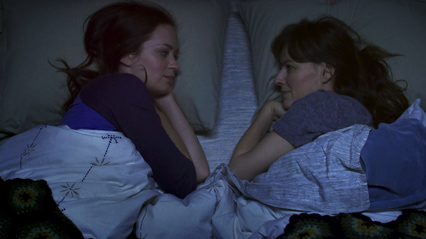
Writer-director Lynn Shelton’s follow-up to “Humpday” is an engagingly unconventional
comedy-drama with a strong script and some terrific performances from its three leads.
The film stars Mark Duplass as Jack, a depressed 30-something slacker who has become
best friends with Iris (Emily Blunt), a year after the death of his brother, who was also Iris’ boyfriend. After causing a scene at an annual memorial gathering for his brother, Jack
decides to accept Iris’ offer of staying at their family’s remote island cabin for a few days,
but when he arrives he’s surprised to find Iris’ sister Hannah (Rosemarie DeWitt), who has
troubles of her own after the collapse of a long-term lesbian relationship.
Compliance
***out of 4
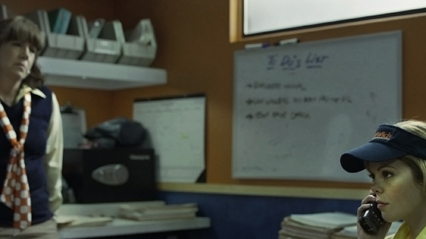
Director: Craig Zobel(“Great World of Sound”) has created an engaging and
provocative story based on a real life incident. The film depicts a busy night at
a Midwest fast food restaurant during which a teenage employee is accused of
theft, detained in a stock room and consequently strip searched in the process of
investigating her alleged crime. The problem is there’s no police detective in sight,
though there is supposedly one on the phone dictating procedures to the chicken
joint’s manager and staff. And to them it all seems a strange yet acceptable idea to
conduct such an outlandish probe by proxy with only the word and authority of an
unfamiliar “cop.” Zobel , as he did so well in his first film, points out the hypocrisies
and strangeness of the world we live in.
Sleepwalk with Me
***1/2

Writer-director Mike Birbiglia’s one-man show is the basis of this engaging and
compelling film. Birbiglia is a standup comedian-turned-filmmaker With the help
of producer and co-writer Ira Glass (NPR’s "This American Life"); he chronicles his
struggle to find work as an aspiring comedian while fending off bizarre sleepwalking
tendencies. The movie is devoid of style despite its poignancies because Birbiglia’s
unique POV carries it along. Speaking to the camera with comic asides in the grand
tradition of "Annie Hall," Birbiglia analyzes his neuroses-, from the relationship
problems he suffers with his longtime girlfriend (Lauren Ambrose) to his half-assed
career as a bartender in the comedy club where he aspires to perform. This unique and
clever film won the Best of Next Audience Award at Sundance 2012.
PARK CITY AT MIDNIGHT
V/H/S
***out of 4
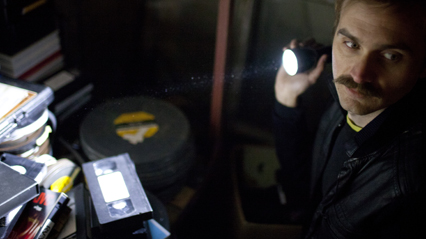
With 6 directors and 9 screenwriters one wonders how anyone figured out what to include
in this project. V/H/S aims to combine the old fashioned horror anthology film with the
modern – and now overly -familiar – found footage movie. This is the case with V/H/S; to begin with we’re watching the self-recorded VHS footage of a group of low intelligence
lunatics who are trashing houses, assaulting women and generally doing things which
make you want them all to die as soon as possible. It’s never actually explained why
they’re using VHS, as this part of the film doesn’t take place in the past, but in this age
of pristine digital recordings there is now something inherently creepy about the grainy
visuals and muffled sound of the obsolete format. After spending some time with this
group and growing to hate them, we learn that they’re planning to break into a reclusive
old man’s house in order to steal a VHS tape that could be extremely valuable. Of course
once they’ve broken into the house and found it more or less deserted they decide to stay
and watch the tape because, as I said, they’re not very smart! Blending classic and modern
horror conventions, V/H/S is a horror film that isn’t afraid to have fun and although it’s
inconsistent it’s an enjoyably visceral ride.
WITH 24 REVIEWS, THAT’S A WRAP FOR SUNDANCE 2012


